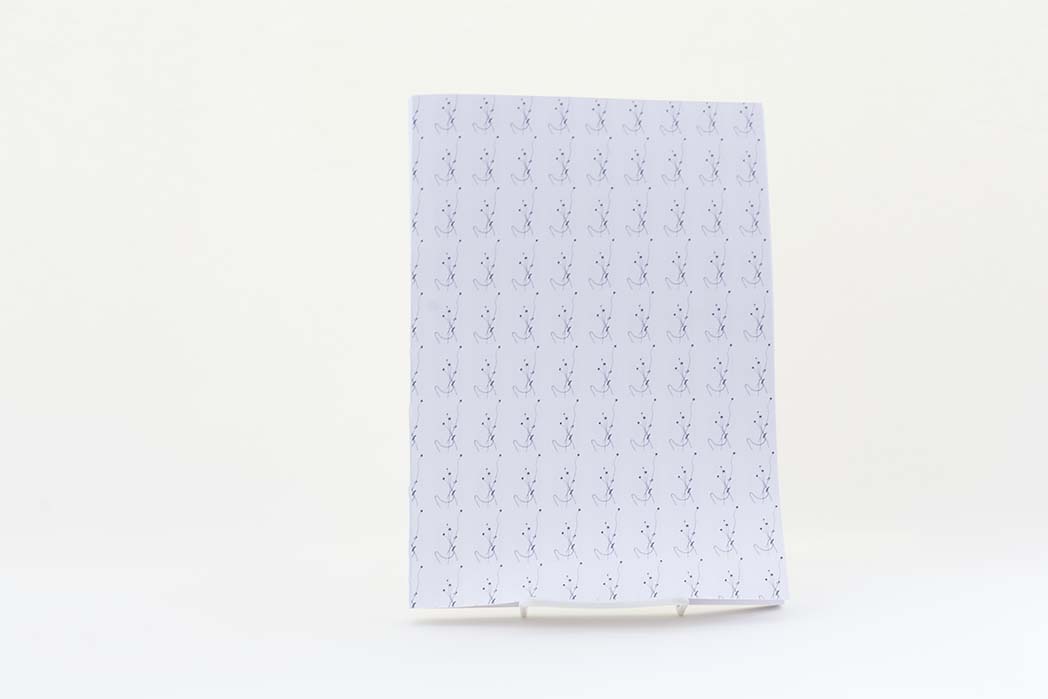
A handmade book
Size: 21 x 29,7cm
Edition: 20
Publication date: September 2020
Price: Sold out
Dear friend,
I hope this letter finds you well. ‘The world goes on somewhere’, you wrote. And it does. Is it bad or good? I do not know. I cannot stop the wind from blowing (as Yako; the weatherman said in The Morning Show, which I really loved).
This spring we were all forced to retire to our homes. Luckily we have a garden and thus it felt as if we went into retreat. When you enter the gate from the road, you find yourself in a different world. The green hedge keeps the outside at bay.
Our garden is a paradise or green hell, depending on how you look at it.
So, I locked myself in the garden and started working on this book. I photographed plants, and used the fibers for making paper. (To be honest, making my own fibers was no success and I ended up buying fibers online). I produced piles of paper, dyed in natural colours, which I made from berries and flowers I picked in my neighbourhood. The whole process was very soothing. I discovered that making paper is a profession in itself. My goal was to make paper as thin as possible with the right stiffness and sound. I never intended to use the paper in one of my books. It does not meet my criteria. It has a language of its own. Nevertheless, it is perfectly imperfect. I did not want to leave the paper unused and decided to photograph every single sheet. And then I made this book.
You know that I make a book every year. This year all my pictures turned out to be abstractions. I wondered why I felt the urge to do so. Was it the unreality of the situation I was facing, or was I just tired of all those voices screaming to be heard? I think it was the latter and now I see these abstract images as a temporary check-out.
Although I could no longer bear the language of the noisy crowd, this book is about language too. An eloquent language, I hope. Gosh, how I long for eloquence these days!
The first pictures for The garden I took at the end of the winter. Pictures of single plants. Frankly, I did not like them at all. I am not a botanical expert nor a gardener. However, I am interested in herbaria. Not because of the individual plants, but because of the collection as a whole and especially the rhythm that is present in it. So I started over again. I used the grid to capture the rhythm and create a pattern, a visual language. The language of my garden came out as a calligraphy. A calligraphy of my outside world. I find it surprisingly eclectic.
Did you know that tramps have a language of their own? It consists of warning signs that give information about specific property, the owner, the availability of food, water, etc. The signs are carved in wooden door frames, walls and other surfaces. I was quite shocked when I discovered that there are actually signs that give information to burglars. If you are not familiar with these signs, you have no idea that paradise is threatened. And it is.
You know this too.
And thus the yard has two sides. It depicts the personal space that is under pressure as well as the intolerance of nimby (not in my backyard).
The last part of this book consists of the experiments I did. You know me. It is hard for me to stick to making the perfect paper. I added colour. I boiled berries and fruit and vegetables. At first, all the paper came out beige-ish. When it is beige, as in the colour of sand, I am okay with it. But when it has a yellow hue, then I find it horrible. On top of that I added another component: leaves and twigs. I pressed them into the wet paper, resulting in bleeding colours.
And with that, by coincidence, these sheets displayed their own visual language, which I labeled monologue intérieur. Because they perfectly reflect what I was thinking all along: beauty is always comforting.
I hope to see you soon. Big hugs and stay safe.
Mémé